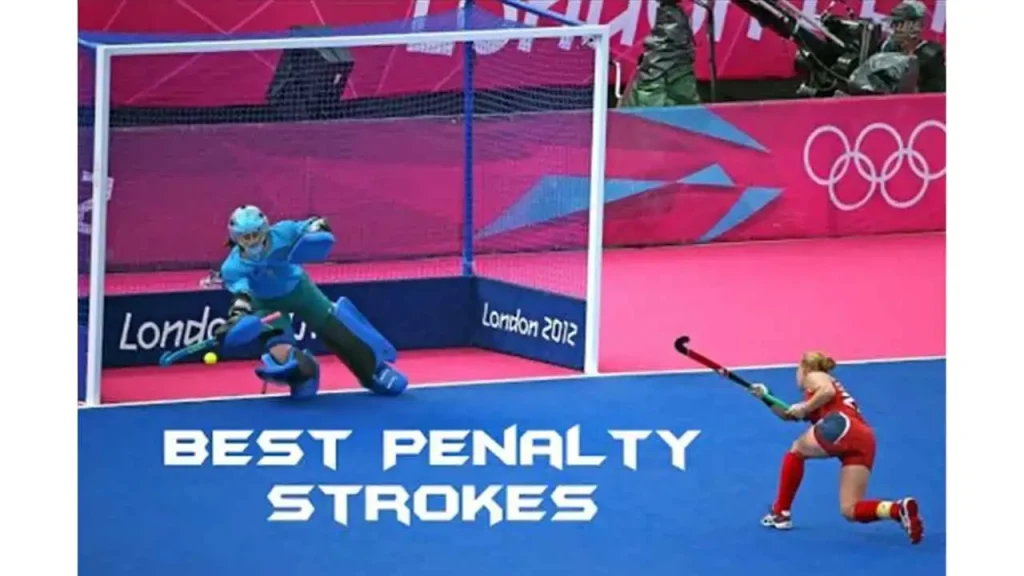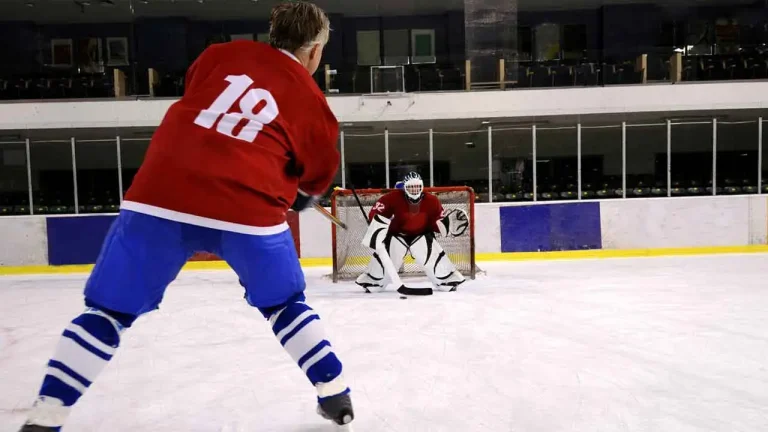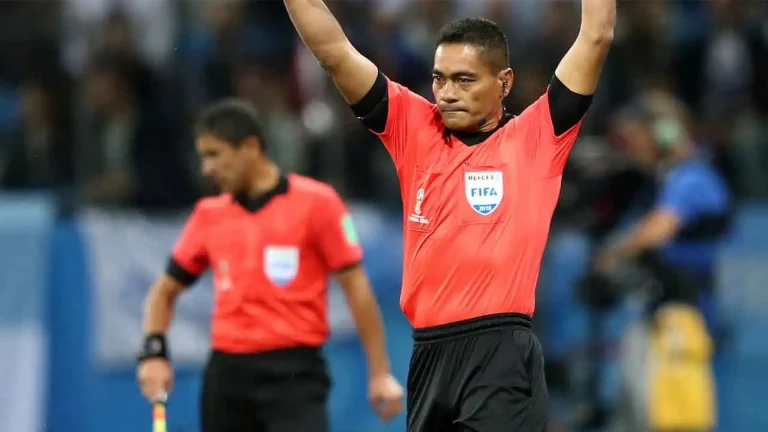Understand how many Quarters in a hockey field sport – Ground Measurement

How Many Quarters in a Hockey Field Game – Explore Hockey Rules, Penalty, Overtime and Timeout
Welcome to the exciting world of field hockey! As you delve into this thrilling sport, you may find yourself wondering about its unique game structure. How many quarters in a hockey match? Do timeouts exist? And what happens when overtime strikes? Fear not, as we unravel the mysteries of field hockey timing and uncover the rules that make this sport so captivating. So grab your stick and let’s dive into the action-packed world of field hockey!
How many quarters in a hockey?
How many quarters are in a field hockey game? Unlike some sports that use traditional “quarters,” field hockey follows its distinct timing structure. Instead of playing in 4 quarters, as you might see in basketball or football, field hockey matches typically consist of 2 halves. Each half is typically 35 minutes long at the international level, with shorter durations for lower-level competitions.
This division into halves allows teams to strategize and make adjustments during halftime. It also helps maintain the fast-paced nature of the sport, ensuring that players stay engaged and spectators remain on the edge of their seats throughout the match.
The decision to have 2 halves instead of 4 quarters offers several benefits. It provides uninterrupted gameplay for longer periods, allowing teams to build momentum and create exciting scoring opportunities. It reduces stoppage time between each period, keeping the energy high and preventing any unnecessary breaks that may disrupt the flow of the game.

So there you have it – while other sports may rely on quarters to structure their games, field hockey opts for 2 intense halves instead. This unique timing format adds an extra layer of excitement to an already thrilling sport!
Quarter Timing in a Field Hockey Match
In the fast-paced and thrilling sport of field hockey, timing plays a crucial role in determining the outcome of each match. Unlike other sports that are divided into halves or quarters, field hockey is played in four quarters. Each quarter has a specific duration, adding up to a total playing time.
The standard duration for each quarter in field hockey is 15 minutes. This means that players have limited time to strategize, execute their game plan, and score goals. The short duration of each quarter adds an element of urgency and excitement to the game.

During breaks between quarters, teams can use this time to regroup, discuss tactics with their coaches, rehydrate themselves, or make any necessary substitutions. This strategic pause allows players to catch their breath and prepare for the next intense phase of play.
Additionally, having four quarters also allows for more flexibility when it comes to managing injuries or stoppages due to unforeseen circumstances such as weather conditions or equipment issues. It ensures that there is ample time available without disrupting the flow and rhythm of the game.
Field hockey timing brings an added layer of intensity and suspense to every match. With only 60 minutes on the clock (excluding overtime), every second counts as teams battle it out for victory on the pitch. So next time you watch a field hockey game or step onto the turf yourself, remember that timing is everything!
Benefits Of a Four Quarter Hockey Games
One of the key benefits of having a 4 quarter-match in field hockey is that it allows for better game management. With shorter quarters, teams can strategize and adapt their gameplay more effectively. Coaches have the opportunity to make tactical changes during each break, which can greatly impact the outcome of the game.
Another advantage is that a four-quarter match provides players with more opportunities for rest and recovery. Field hockey is an intense sport that requires physical endurance and mental sharpness. By dividing the game into quarters, players can take short breaks between periods to catch their breath, rehydrate, and refocus on their performance.
Moreover, from a broadcasting perspective, having four quarters makes it easier to fit commercial breaks into live coverage without interrupting crucial moments of play. This benefits both broadcasters and sponsors while still providing viewers with uninterrupted action during each quarter.
Implementing a four-quarter structure in field hockey matches brings various advantages such as enhanced game management, improved player recovery time, increased spectator engagement, and seamless integration of commercial breaks during broadcasts.
Overtime In Field Hockey
Overtime in field hockey is an exciting and intense period of play that occurs when the match is tied at the end of regulation time. It provides teams with a chance to break the deadlock and determine a winner. During overtime, both teams have equal opportunities to score goals and secure victory.
In most field hockey matches, overtime consists of two 7.5-minute halves, with a short break between them for players to catch their breath and strategize. The team that scores more goals during this extra time wins the match.
The pressure during overtime can be immense as each team strives to come out on top. Players must maintain focus, agility, and teamwork while battling fatigue. It’s not uncommon for spectators’ hearts to race as they witness these thrilling moments unfold on the field.
Overtime periods add an element of unpredictability and excitement to field hockey matches. They test teams’ resilience, determination, and ability to perform under pressure. Oftentimes, it’s during these high-stakes moments that true champions emerge.
So next time you’re watching or playing a field hockey match that goes into overtime, get ready for some edge-of-your-seat action! The suspense builds as both teams fight tooth and nail for victory until the final whistle blows – leaving fans thrilled by every second of play!
Timeout Opportunity
Timeouts can play a crucial role in field hockey matches, allowing teams to regroup and strategize during intense moments of the game. In field hockey, each team is typically allowed one timeout per half, allowing them to catch their breath and make necessary adjustments. The duration of timeouts can vary depending on the level of play or specific tournament rules. Typically, they last between 1-2 minutes but teams need to use this time wisely as it is limited.

During a timeout, players gather around their coach on the sideline for a brief period of respite and guidance. Coaches may take this time to provide feedback on gameplay, offer tactical suggestions, or simply motivate and encourage their team. It’s a chance for players to refocus and reset their mindset before returning to the pitch.
Timeouts are often called at critical points in the match when momentum needs shifting or when there is a need for strategic changes. They allow coaches to address any issues that may have arisen during gameplay and provide valuable insights that could potentially turn the tide in favor of their team.
Timeouts serve as valuable opportunities for teams to reassess their tactics, recharge mentally and physically, and come together as a cohesive unit. It adds another layer of strategy to the game while providing much-needed rest periods amidst the fast-paced nature of field hockey matches
The Longest Field Hockey Match Ever
Field hockey matches are known for their fast-paced action and intense gameplay. However, there have been instances when a match seems to go on forever. The longest field hockey match ever recorded lasted an astonishing 7 hours and 52 minutes!
This epic marathon took place between England and the Netherlands in 2018 during the Hockey World Cup. The teams battled it out tirelessly, with neither side giving an inch. It was a true test of endurance and skill. As the clock ticked away, players pushed themselves to their limits both physically and mentally. Their determination and resilience were truly remarkable.
The match finally came to an end after 4 quarters plus two periods of extra time! Despite the grueling length of the game, both teams showcased incredible sportsmanship throughout. This record-breaking match serves as a testament to the passion and dedication that field hockey players possess. It highlights their unwavering commitment to succeed even in the face of immense challenges.
It’s moments like these that make field hockey such a thrilling sport to watch – you never know when you might witness history being made on the pitch! So next time you tune in to watch a field hockey game, be prepared for anything because records are meant to be broken!
Rule of Hockey Game
Field hockey is a fast-paced and exciting sport that requires both skill and strategy. To fully understand the game, it’s essential to familiarize yourself with the rules of field hockey. These rules govern everything from player positions to penalties and scoring. One important aspect of field hockey is knowing the dimensions of the playing surface. A standard field measures 91.4 meters long by 55 meters wide, with a goal at each end.
When it comes to scoring, players aim to get the ball into their opponent’s goal using their sticks. A goal is awarded when the ball completely crosses the goal line between the 2 posts and under the crossbar. They are awarded to an attacking team when a defender commits a foul within their circle or if they intentionally play or stop the ball with any part of their body. During a penalty corner, attackers have an opportunity to take a direct shot on goal from outside the circle.
Understanding these rules will enhance your enjoyment while watching or participating in this thrilling sport!
Hockey Ground Measurement
The dimensions of a hockey ground play a crucial role in maintaining fairness and ensuring an exciting gameplay experience. The International Hockey Federation (FIH) has set specific guidelines for the size of the field, which must be adhered to in official matches.

A standard hockey ground measures 91.4 meters in length and 55 meters in width. These measurements provide ample space for players to showcase their skills and tactics while allowing for fast-paced action throughout the game.
The boundaries of the field are marked by white lines, with additional markings indicating various areas such as penalty corners, shooting circles, and halfway lines. These markers help both players and referees navigate the field easily during intense matches.
Penalty corner in hockey
Penalty corners are a crucial aspect of field hockey that can completely change the course of a game. This set-piece opportunity is awarded to the attacking team when the defending team commits a foul within their circle. The penalty corner allows the attacking team to take a shot at goal from close range, with defenders and the goalkeeper trying to defend it.
During a penalty corner, 5 attackers line up outside the circle while 4 defenders (including the goalkeeper) position themselves inside. The ball is injected by one of the attackers to another player positioned at the top of the circle who then takes a shot at goal. The other attackers and defenders also play their roles in creating scoring opportunities or preventing them respectively.
The intensity and complexity involved in penalty corners make them one of the most exciting moments in field hockey matches. It requires skillful execution, quick thinking, teamwork, and precise timing to successfully convert these chances into goals.
Penalty corners are high-pressure situations in field hockey that can lead to thrilling moments as players fight for goals or attempt defensive heroics. Mastering this aspect of play can give teams a significant advantage during matches.
Penalty stroke in hockey
A penalty stroke in hockey is a critical moment in the game that can make or break a team’s chances of scoring. It occurs when a defending player commits a foul inside their circle, denying an attacking player a clear goal-scoring opportunity. This results in the awarding of a penalty stroke, which is essentially a one-on-one showdown between the striker and the goalkeeper.
During a penalty stroke, all players except for the striker and goalkeeper must be positioned outside the circle. The striker takes their position on the 23-meter line with only 8 seconds to take their shot. It requires precision, skill, and nerves of steel to outwit the goalkeeper and send the ball into the back of the net.

The pressure on both players is immense during this crucial moment. The goalkeeper must anticipate where the striker will shoot while staying within legal boundaries inside their goal area. Meanwhile, it’s up to the striker to deceive and outsmart them with swift movements and clever shots.
A successful penalty stroke can change not just individual matches but entire tournaments as well. One well-executed strike can turn despair into triumph or secure victory from defeat.
Free Hit in Hockey
One of the key aspects of field hockey is the free hit. It is a crucial opportunity for a team to regain control and create scoring opportunities. A free hit is awarded when there is an infringement or foul committed by the opposing team. When a player takes a free hit, they have the freedom to pass, shoot, or dribble the ball without interference from opponents within 5 meters. The opposing team must also be at least 5 meters away from where the free hit was taken.
The player taking the free hit has various options available to them. They can choose to play it quickly and go for an immediate attack, or they can take their time and assess their options before making a move. A well-executed free hit can turn the tide of a game by creating space and opening up scoring opportunities. It requires precision, quick decision-making, and effective communication between teammates.
The ability to capitalize on a free hit can make all the difference in securing victory for your team. Players must be aware of their surroundings, anticipate defensive strategies, and execute their skills with accuracy. Understanding how to effectively utilize and defend against free hits is crucial in field hockey. It adds another layer of strategy to this fast-paced sport and allows teams to seize control during critical moments of play.
How many players in hockey?
How many players in hockey? It’s a question that often comes up for those new to the sport. Well, in field hockey, each team typically has 11 players on the field at a time. This includes one goalkeeper and 10 outfield players. The number of players can vary depending on the level of play and the specific rules being followed. For example, some youth leagues may have smaller teams with fewer players to allow for more playing time and development.
In addition to these 11 players, teams also usually have substitutes who can be brought into the game as needed. These substitutes provide an opportunity for resting tired players or making tactical changes during gameplay. It’s worth noting that ice hockey has different player numbers compared to field hockey. In ice hockey, each team usually has 6 players on the ice at a time: 3 forwards, 2 defensemen, and 1 goaltender.
So whether you’re watching a thrilling game of field hockey or getting caught up in an intense ice hockey match, understanding how many players are involved is key to appreciating the intricacies of this fast-paced sport.
FAQs
Conclusion
Field hockey is a thrilling sport that captures the attention of players and spectators alike. With its unique game structure, including quarter timing, overtime rules, and various penalties, field hockey offers an exciting and action-packed experience.
The benefits of a four-quarter match are evident. It provides teams with ample time to showcase their skills while ensuring fairness and equal opportunities on both sides. Additionally, the inclusion of overtime adds even more excitement as teams battle it out until there is a winner.
Understanding the rules of field hockey is crucial for both players and fans. From knowing the dimensions of the ground to understanding penalties like penalty corners or strokes, these rules shape the dynamics of the game. With all this information at your fingertips, you can fully appreciate the intricacies that make field hockey such an incredible sport. Whether you’re new to field hockey or have been following it for years, take a moment to toast this unique game structure that keeps us on our toes from start to finish!





